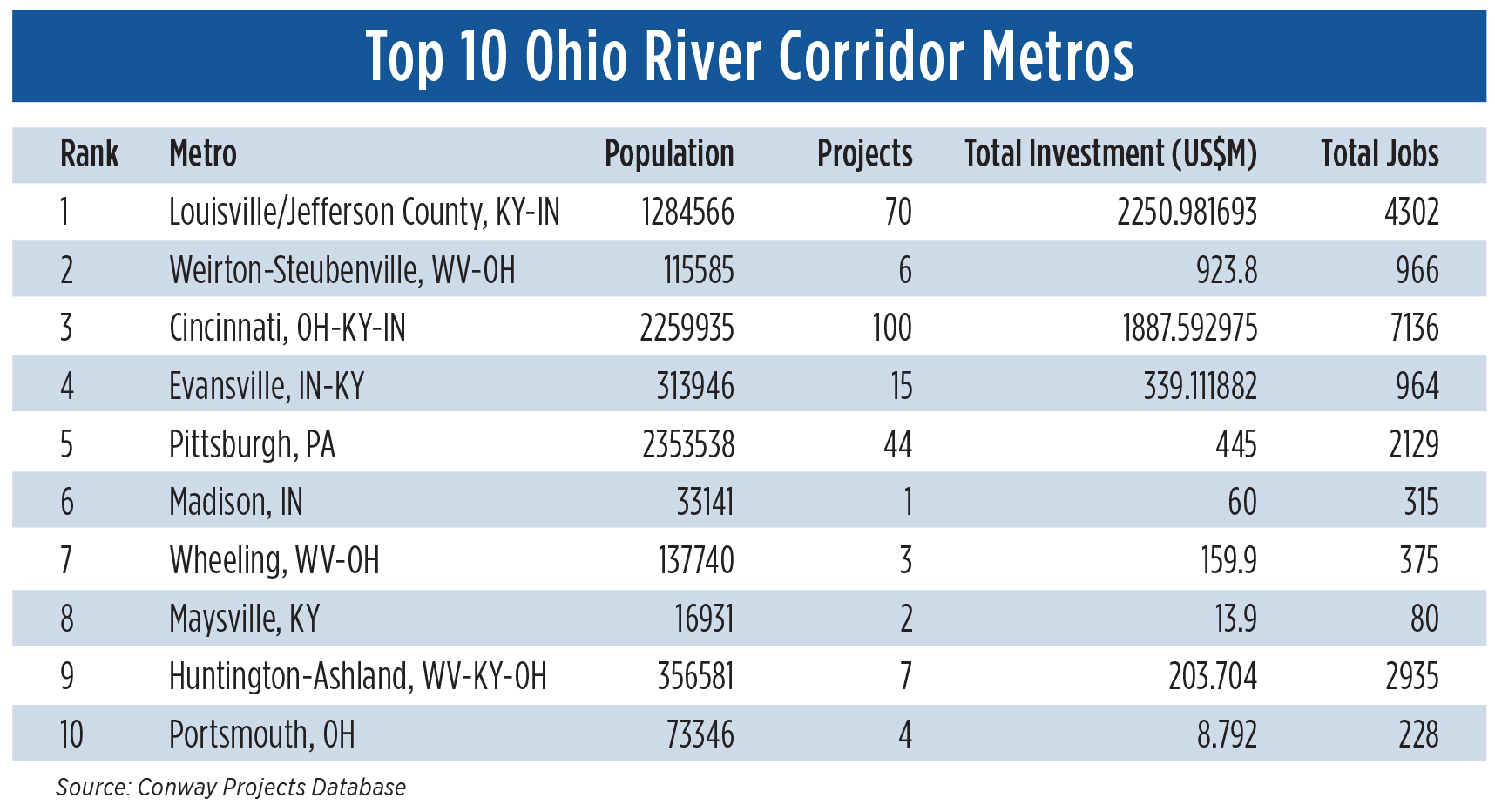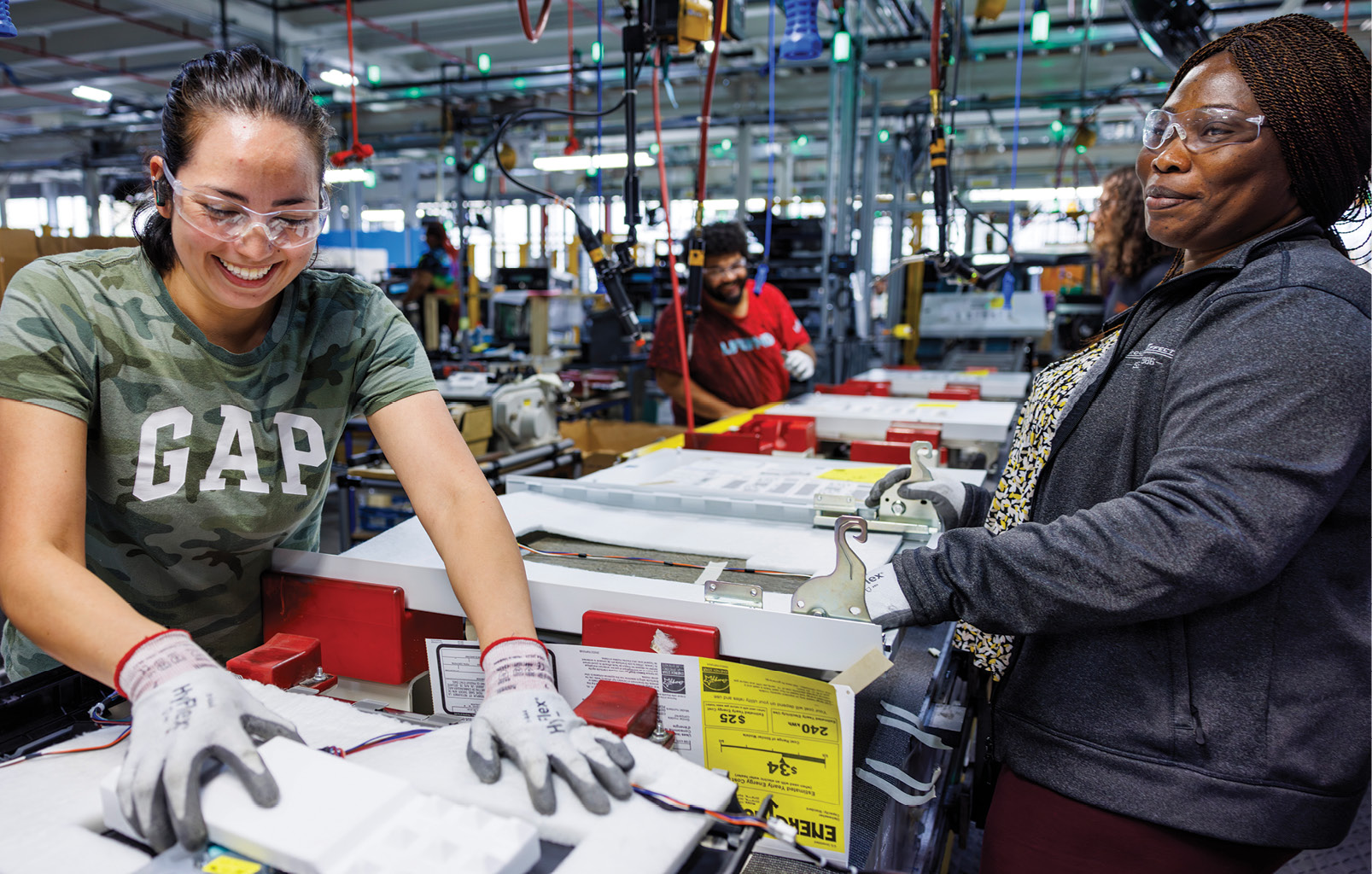After tying with its regional rival Cincinnati last year, metro Louisville, Kentucky, has taken the crown as top metro in this year’s Ohio River Corridor rankings.
The result comes from an index of corporate end-user facility investment data entered into Site Selection’s proprietary Conway Projects Database over an 18-month period. Every county, metro and micropolitan area that touches the river and has welcomed at least two projects is then evaluated cumulatively and per capita by number of projects, affiliated project investment and job creation numbers.

Photo courtesy of Roadmaster
Weirton-Steubenville, West Virginia-Ohio comes from out of nowhere to No. 2 on this year’s list, followed by the tri-state Cincinnati region and the metro areas of Evansville, Pittsburgh and Wheeling. Among the largest investments in metro Cincinnati were logistics projects from Amazon Air and Deutsche Post (DHL) in Hebron, Kentucky; and a 1,500-job, $150 million headquarters investment in Cincinnati proper from Medpace.
Companies investing in Greater Louisville include GE Appliances, a Haier company, whose Appliance Park plant in September welcomed officials to celebrate the completion of a $450 million transformation originally announced in 2021. “We are committed to U.S. manufacturing and Louisville, Kentucky,” said Kevin Nolan, president and CEO of GE Appliances. Over the past seven years, GE Appliances has invested more than $2 billion in its U.S. manufacturing and distribution operations and created more than 4,000 new jobs. A 2022 economic impact analysis released by the company reported that “GE Appliances’ investments, supplier base, customers and payroll contributed $7.46 billion to Kentucky’s GDP last year. More than $517 million is spent by GE Appliances annually with more than 640 Kentucky suppliers.”
That’s the sort of ripple any river city likes to see.
Drivers Wanted
More than 45% of the 276 projects examined in this year’s ranking have a manufacturing component — as sure a sign as any of corporate right-shoring and reshoring. Logistics is another perennial driver of facility development in metro Louisville-Jefferson County as well as in other regions this year, accounting for more than 26% of all projects. No wonder Roadmaster Drivers School, part of Werner Enterprises, has located its latest training center in the Louisville-area municipality if Shepherdsville, just south of Louisville proper in Bullitt County along I-65. The region is a nexus of Interstates, with I-71 and I-64 shooting out their own spokes.

According to U.S. Department of Transportation data, Roadmaster’s fleet of 189 vehicles saw 761 drivers drive more than 2 million miles in 2022, fanning out from the organization’s portfolio of 24 driver training sites.
I asked Roadmaster President Brad Ball to explain why the location makes sense for his organization. He says the first thing to know is Roadmaster sends half its students straight to Werner. Many of the remainder are sent by other trucking enterprises for contract fleet training, with the balance of enrollment composed of retail students. Many students are already pre-hired.
“Where are the jobs? That’s the most important thing,” Ball says. “We ask our carriers and partners, ‘Where do you need us to be?’ They’ll give us an idea of where there’s a lot of freight and not enough drivers.” Taking into account the presence of distribution centers as well, “Louisville was the next logical place to be,” Ball says. “We’ve already seen it produce the right number of leads for the advertising spend we’ve seen in that area.”
The average truck driver is 55 years old. That means the trucking industry needs to hire around 1.2 million new drivers over the next decade, Roadmaster says. Pay in the U.S. averages $62,400, and in Kentucky can reach as high as 138,949, the company says, calling Kentucky “the best state in the U.S. to be a truck driver.”
“We’re excited to be there,” Ball says. “There’s a lot of freight to move.”
What’s Up in Weirton-Steubenville?
What’s the buzz in Weirton-Steubenville, a region best known for producing steel, coal and Dean Martin?
A 750-job manufacturing facility from energy storage company Form Energy, for one. Company and area officials broke ground for the facility in May 2023 in Weirton. The factory — aided by incentives from the federal Inflation Reduction Act and an incentive package from the State of West Virginia worth “approximately $290 million in asset-based, performance financing” — will produce 100-hour iron-air battery systems.
A release noted that the location was selected after a nationwide search that included reviewing over 500 candidate locations across 16 states. “The company ultimately chose a 55-acre site in Weirton because of the historic steel community’s strong cultural heritage and the site’s direct access to rail, hardened highways and the Ohio River,” said the release from the State of West Virginia.
“Today, as we commence construction of our first U.S. battery manufacturing facility, we celebrate the transformation and revitalization of this historic industrial steel site and that we are one step closer to delivering on our mission of manufacturing energy storage systems for a better world right here in West Virginia,” said Form Energy CEO Mateo Jaramillo.
Among other investments in the bi-state region are projects from JSW Steel in Mingo Junction, Ohio; Fanti USA in Weirton; Apex Environmental in Amsterdam, Ohio; Pure Watercraft in Beech Bottom, West Virginia; and Heavy Iron Oilfield Services in Chester, West Virginia.

